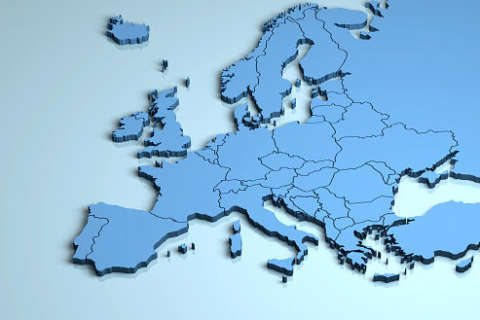BUDAPEST, Hungary (AP) — Ceremonies were held just before midnight Tuesday to mark Bulgaria’s and Romania’s full membership in Europe’s Schengen area, the culmination of years of negotiations by the Eastern European countries to join the ID check-free travel zone.
Identification checks at the land borders between Bulgaria and Romania and their neighboring European Union-member countries were officially ceased at midnight, providing travelers free access to the rest of the 27-member EU bloc. The two countries partially joined the Schengen area in March, but open travel was restricted to those arriving only by air or sea.
Late on Tuesday, the interior ministers of Bulgaria and Romania met at the Ruse-Giurgiu border crossing between the two countries to mark the opening of the frontier. Another short ceremony was held at a border crossing between Hungary and Romania with a meeting between Hungary’s national chief of police and the chief inspector of Romania’s border police.
The expansion of Schengen came after months of efforts to integrate Bulgaria and Romania into the zone by Hungary’s government as it held the six-month rotating presidency of the EU.
Some 1 million ethnic Hungarians live in the Transylvania region of Romania, a legacy of the partition of Hungary following World War I. Relations have been historically rocky between the two countries, but the opening of the border will ease travel and strengthen links between the regions.
The Schengen Area, one of the main achievements of the European project, was established in 1985 as an intergovernmental project between five EU countries — France, Germany, Belgium, the Netherlands and Luxembourg. It has gradually expanded to become the largest free travel area in the world.
However, several Schengen member countries, including the Netherlands, Austria and Germany, this year reinstated some land border checks over concerns ranging from migration to security. Some EU officials warned the re-imposed checks could undermine the scheme’s goals.
Before Bulgaria and Romania’s partial admission, Schengen was comprised of 23 of the 27 EU member countries, along with Switzerland, Norway, Iceland and Liechtenstein. Around 3.5 million people cross an internal border each day, and more than 420 million people live within the Schengen area.
The two Balkan countries joined the EU in 2007 but were not integrated into the borderless zone until March, when border checks were lifted from maritime and air travel. Land border checks remained in place due to opposition, chiefly from Austria, over concerns that the two countries were not doing enough to prevent migrants from entering without authorization.
Romanian President Klaus Iohannis earlier called Romania’s full membership in the Schengen area a “natural and necessary step” that will significantly reduce wait times at borders, lower logistical costs for businesses and attract foreign investors. Economists from the Bulgarian Academy of Sciences calculated that with membership, the total positive financial effect for Bulgaria would amount to 800 million euro ($840 million) per year.
Copyright © 2025 The Associated Press. All rights reserved. This material may not be published, broadcast, written or redistributed.






